Drones have changed the way we use technology by giving us new ways to do things like monitoring, logistics, farming, and even personal entertainment. As more people buy drones, the demand for drone control apps has increased significantly. These apps let people easily fly drones using their phones or laptops.
In the past few years, drone control apps have become very common because they make drones more accurate, automated, and useful.
Users can fly drones, change camera angles, and set flight paths with these apps. Some jobs, like crop monitoring or package delivery, can even be done automatically.
Realizing this trend, businesses and tech fans are trying to make a drone app as a way to make a lot of money. A drone control app can make money in this quickly growing market if it has the right features, technology stack, and business plan.
This blog post will teach you how to develop a drone control app, including the most important steps, features, prices, and problems you might face. If you’re a startup or a business, this drone control app development guide will help you manage the process effectively
Overview of Drone Control Apps and Its Market
A drone control app is a mobile or web application that helps users control drones remotely. These apps connect with drones through Wi-Fi, Bluetooth, or radio signals, allowing users to navigate, monitor, and manage drone functions in real time.
If you are a hobbyist flying a drone for fun or a professional using it for photography, mapping, or security, a well-developed app makes operations smooth and efficient.
Drone Control App Market Size and Growth
The drone software market has experienced significant growth in recent years, reflecting the increasing adoption of drones across various industries. Here are some key statistics:
-
- In 2019, the global drone software market was valued at $1.17 billion and is projected to reach $43.04 billion by 2032, exhibiting a CAGR of 32.00% during the forecast period. (Fortune Business Insights)
- The market size was valued at $5.45 billion in 2022 and is expected to grow at a CAGR of 18.6% from 2023 to 2030. (Grand View Research)
- The global drone software market is anticipated to reach $23.73 billion by 2030, expanding at a CAGR of 18.6% from 2023 to 2030. (Grand View Research)
- Looking ahead, the market is projected to grow from $6.0 billion in 2023 to approximately $36.5 billion by 2033, representing a CAGR of 19.8% over the forecast period. (Market.us Scoop)
The above statistics showcase the rapid growth and profitable potential of the drone software industry. Let’s move on to understand the working of drone apps.
How Drone Control Apps Work?
Drone control apps function differently based on their use cases, whether for photography, surveillance, agriculture, or industrial inspections.
However, the fundamental working mechanism remains similar across applications. These apps act as a bridge between the user and the drone, enabling absolute communication, navigation, and control.
Below is a step-by-step breakdown of how a drone control app operates:
1] Connection & Communication
-
- The app connects with the drone via Wi-Fi, Bluetooth, or radio frequency (RF) controllers.
- Advanced drones use 5G or LTE networks for extended range and stable connections.
- Once paired, the app synchronizes with the drone’s system, allowing real-time communication.
2] User Interface & Controls
-
- The app provides an intuitive user interface (UI) with virtual joysticks, sliders, and motion gestures for easy control.
- Users can manage altitude, speed, direction, and camera angles from their smartphone or tablet.
- Some apps include voice control or gesture-based commands for hands-free operation.
3] GPS & Navigation System
-
- GPS technology enables precise positioning and autonomous flight path planning.
- Users can set predefined flight paths using a map-based interface.
- Some apps integrate waypoint navigation, where the drone follows multiple checkpoints before returning.
4] Camera & Live Video Streaming
-
- The app displays a real-time video feed from the drone’s camera.
- Users can adjust camera angles, zoom levels, and resolution settings remotely.
- High-end drones support 4K video recording and thermal imaging for specialized applications.
5] Autonomous Flight & AI Features
-
- Many modern drones offer autonomous flight modes, reducing the need for manual control.
- AI-powered features like object tracking, facial recognition, and obstacle avoidance enhance usability.
- Automated landing and "Follow Me" mode enable drones to track and follow moving subjects.
6] Data Collection & Storage
-
- Drones collect valuable data, such as images, temperature readings, and survey details.
- The data is either stored locally on an SD card or uploaded to cloud storage.
- Some drones use AI-driven analytics for real-time processing of collected data.
7] Safety & Emergency Features
-
- If a drone loses connection, the Return-to-Home (RTH) feature brings it back to the takeoff point.
- Collision detection and geofencing technology prevent drones from flying into restricted areas.
- Some apps provide emergency landing assistance in case of battery failure or signal loss.
Now, you are familiar with the working of drone controller apps. However, how the app operates directly depends on the features available in that particular mobile app.
So, take a look at the must-have features of drone apps that define its working
Core Features of a Drone Control Application
To develop a drone app, it must include essential features that ensure seamless drone operation, safety, and user convenience.
Here are ten key features required to develop a drone control app:
-
- Remote Control & Navigation: It provides joystick-based touch controls or motion gestures to operate the drone. It enables users to adjust altitude, speed, and direction effortlessly.
- GPS & Geofencing: GPS integration ensures precise navigation and predefined flight routes. Geofencing restricts drones from entering no-fly zones and alerts users.
- Real-Time Video Streaming: Allows users to view live footage from the drone’s camera in high resolution and supports FPV (First Person View) mode for immersive flying experiences.
- Autonomous Flight Modes: Includes features like Follow Me Mode, Waypoint Navigation, and Auto Takeoff/Landing. It uses AI to perform tasks without manual intervention.
- Object Detection & Collision Avoidance: It is equipped with sensors and AI algorithms to detect obstacles and automatically adjusts flight path to avoid crashes.
- Flight Data Logging & Analytics: Records flight history, speed, altitude, and battery usage and helps professionals analyze performance and optimize drone operations.
- Battery & Signal Monitoring: It alerts users about low battery levels or connection loss with a return-to-home (RTH) feature and displays real-time battery percentage and signal strength.
- Cloud Storage & Data Sharing: Saves captured images, videos, and sensor data on cloud servers, allowing easy sharing of footage and reports with teams or clients.
- Multi-Device Synchronization: Some apps support multi-user access for collaborative drone missions, enabling drone control from smartphones, tablets, or dedicated controllers..
- Compliance & No-Fly Zone Alerts: It provides warnings if the drone enters a restricted area or exceeds altitude limits with integration aviation regulations to ensure legal drone usage
These features ensure a robust drone controller, making drones more efficient, user-friendly, and safe for various applications.
Once you are well-informed about the basics of drone apps, it's time to learn how to initiate the process to build drone controller apps. Let’s start!
Step-by-Step Guide to Drone App Development
If you’re wondering how to build a drone control app, the process requires careful planning, the right technology, and expert execution.
Below is a complete guide to drone control app development, covering each essential step and its significance in ensuring a successful application.
Step 1: Define the Purpose of Your App
Before you create a drone control app, you must decide its purpose. Are you building it for aerial photography, agriculture, surveillance, or delivery services? Understanding the specific use case will help in choosing the right features and technology.
Entrepreneurs who develop drone control apps for niche industries often gain a competitive edge. Clearly defining your goals ensures that your app serves its users effectively and meets market demands.
Significance: A well-defined purpose helps in identifying the right target audience, required functionalities, and revenue opportunities. It also saves time and resources by preventing unnecessary feature additions later in the development process.
Step 2: Prepare a Plan of Action
Once you have a clear idea of your app’s purpose, the next step is planning. A solid roadmap outlines the features, budget, timeline, and technical requirements. This step is crucial in drone control software development, as it prevents costly mistakes later.
If you want to develop a drone app that stands out, planning should also include researching competitors and identifying gaps in existing solutions.
Significance: A well-structured plan acts as a blueprint for the entire project, ensuring smoother execution and fewer roadblocks. It also helps in setting clear milestones and tracking progress effectively.
Step 3: Select the Right Tech Stack and Platform
Choosing the right technology stack is essential in drone controller app development. The app should be compatible with both iOS and Android to reach a wider audience.
Popular programming languages to build drone apps include Swift, Kotlin, Python, and JavaScript. You also need cloud integration for data storage and real-time communication protocols like MQTT or WebRTC.
Significance: Using the right tech stack ensures that your app remains scalable, high-performing, and secure. It also plays a vital role in maintaining seamless drone-to-app communication and processing real-time data efficiently.
Step 4: Create Appealing UI/UX Design
A user-friendly design is key to build a drone controller app that is intuitive and easy to use. The interface should have smooth navigation, clear control buttons, and interactive elements.
Whether users want to manually fly drones or set automated routes, they should find the experience seamless. A well-designed UI enhances the usability of the app, making it more engaging and effective for drone operations.
Significance: Appealing UI/UX design enhances user satisfaction and retention. If the controls are complicated or the design is cluttered, users may abandon the app. A clean, engaging interface ensures a better user experience and increased app adoption.
Step 5: Choose the Core Features
To create a mobile app, you must decide on its core functionalities. Features like real-time video streaming, GPS navigation, geofencing, object tracking, and auto-return-to-home are essential.
Depending on your target industry, you may also include AI-powered automation, data analytics, or cloud storage. A well-thought-out feature set enhances the app’s efficiency and user satisfaction, ensuring a high-quality drone app. .
Significance: Well-defined features ensure that the app meets user expectations and provides valuable functionalities. Choosing the right features also helps in maintaining app efficiency without unnecessary complexity.
Step 6: Start the Development Process
Once the planning and design phases are complete, the actual development begins.
This step involves coding, backend setup, API integration, and database management. Dedicated developers work to create a drone app, ensuring smooth communication between the drone and the app.
Using agile development methodologies can help refine the app with continuous feedback and iterations. Proper coding practices ensure that you build a drone control application that is efficient and reliable.
Significance: A well-executed development process ensures the app is reliable, responsive, and fully functional. It lays the foundation for a seamless user experience, ensuring stability and scalability.
Step 7: Perform Testing and Quality Assurance
Testing is crucial to eliminate bugs and ensure smooth performance.
Functional testing checks if all the stages to build a drone application have met all requirements, while real-world testing ensures stable drone connectivity and flight accuracy. Security testing also plays a significant role, preventing unauthorized access and ensuring data protection.
By conducting thorough app testing, you can make a drone control app that operates seamlessly across different conditions.
Significance: Rigorous testing prevents crashes, connectivity issues, and data leaks. A thoroughly tested app provides a better user experience and builds credibility in the market.
Step 8: Deploy the App
After successful testing, the final step is launching the app.
Deployment includes submitting the app to the Google Play Store and Apple App Store, configuring cloud services, and setting up user support. Post-launch monitoring helps in gathering user feedback and making necessary improvements.
Regular updates ensure that your app remains functional and competitive in the growing drone technology market. A well-planned deployment phase ensures the long-term success of your drone control app development project.
Significance: A smooth deployment process ensures your app reaches users without glitches or delays. Post-launch updates and customer support also help maintain app performance and user satisfaction over time.
Following these steps will help you to get a feature-rich drone application. These apps serve different purposes in each industry. Let’s study how various industries are harnessing the potential of drone technology.
Applications of Drone Technology Across Various Industries
Drones are revolutionizing multiple industries by enhancing efficiency, reducing operational costs, and improving data collection.
With the help of drone control app development, businesses can automate tasks, monitor vast areas, and capture high-quality data in real time.
Here are some of the key industries utilizing drones and how they benefit from this technology:
1. Agriculture
-
- Farmers use drones for crop monitoring, precision farming, and pesticide spraying.
- NDVI (Normalized Difference Vegetation Index) imaging helps in analyzing plant health.
- Autonomous drones reduce labor costs by surveying large farmlands quickly.
- Soil analysis using drones allows for better irrigation and fertilization planning.
2. Construction & Infrastructure
-
- Drones assist in site mapping, progress monitoring, and 3D modeling of construction sites.
- They help in safety inspections, reducing the need for manual checks in hazardous areas.
- Thermal imaging detects structural weaknesses in buildings and bridges.
- Real-time aerial surveys improve project planning and efficiency.
3. Logistics & Delivery
-
- Companies like Amazon and UPS are developing drones for last-mile delivery services.
- Medical supply deliveries in remote areas ensure faster access to healthcare essentials.
- Warehouse inventory drones automate stock checking and management.
- Traffic avoidance technology ensures faster and more efficient deliveries.
4. Defense & Security
-
- Military drones are used for surveillance, reconnaissance, and combat missions.
- Law enforcement agencies deploy drones for crowd monitoring and criminal tracking.
- Thermal and night-vision cameras improve search-and-rescue operations.
- Anti-drone technology is being developed to prevent unauthorized drone activities.
5. Media & Entertainment
-
- Drones are widely used in filmmaking, live event coverage, and sports broadcasting.
- High-resolution aerial shots offer unique perspectives for movies and documentaries.
- Live streaming drones enhance concert and festival experiences.
- Advertisers use drones for aerial banner displays and light shows.
6. Oil, Gas & Mining
-
- Drones help in pipeline and rig inspections, minimizing human risk in hazardous environments.
- Thermal imaging and LiDAR technology detect gas leaks and geological changes.
- Mining companies use drones for surveying and mapping excavation sites.
- Real-time data improves resource management and operational safety.
7. Environmental Monitoring & Disaster Management
-
- Drones track deforestation, wildlife populations, and climate change effects.
- During natural disasters, drones assist in search-and-rescue missions and damage assessments.
- Firefighting drones can detect heat signatures and spray fire-retardant chemicals.
- Drones help in ocean and river pollution monitoring through aerial and underwater imaging.
8. Healthcare & Emergency Response
-
- Medical drones deliver vaccines, medicines, and organs for transplants.
- In remote areas, drones provide telemedicine support by connecting doctors with patients.
- Automated external defibrillator (AED) drones reach heart attack patients faster than ambulances.
- Drones equipped with AI can detect injuries and analyze emergency situations in real time.
9. Smart Cities & Urban Planning
-
- Drones are used for traffic monitoring, urban mapping, and infrastructure maintenance.
- Smart surveillance drones improve city security and emergency response times.
- Governments use drones for air quality monitoring and waste management planning.
- Autonomous drones assist in utility inspections for power lines, bridges, and roads.
10. Sports & Adventure
-
- Drones capture dynamic footage for extreme sports like skiing, surfing, and racing.
- FPV (First-Person View) drones are popular in drone racing competitions.
- Tracking drones follow athletes for training analysis and performance improvement.
- Autonomous drones enhance wildlife and safari tourism experiences.
These industries are successfully using this technology for seamless operations while generating revenue.
Some are the best drone control software available in the market which are dominating across various industries. Here is the top 5 drone software:
Best Drone Controller Software
Drone control software plays a crucial role in managing and optimizing drone operations.
Whether for professional or recreational use, the right software enhances flight stability, automation, and data collection. Here are some of the best drone controller software available today:
1. DJI Fly
DJI Fly is an intuitive and beginner-friendly app designed for DJI drones, making it easy for users to control and navigate their drones.
Features:
-
- Simple UI with smart flight modes
- Live HD video streaming
- GPS-based navigation and return-to-home (RTH) feature.
Best For: Hobbyists and beginners looking for an easy-to-use drone control app with smart features.
2. Litchi
Litchi is a powerful third-party app that offers advanced flight automation for DJI drones. It is widely used by professionals who need precise flight paths.
Features:
-
- Waypoint mission planning
- VR mode for immersive flying
- ActiveTrack for automatic object tracking
Best For: Professionals and photographers who need autonomous flight and custom route planning.
3. PIX4Dcapture Pro
PIX4Dcapture Pro is a top choice for mapping and surveying applications. It allows users to plan and automate drone flights for aerial data collection.
Features:
-
- Automatic flight planning
- 3D mapping and photogrammetry
- Integration with PIX4Dcapture Pro for detailed analysis
Best For: Businesses involved in construction, agriculture, and land surveying.
4. DroneDeploy
DroneDeploy is an advanced drone control software used for industries like agriculture, construction, and inspection. It provides cloud-based drone mapping solutions.
Features:
-
- Real-time 2D and 3D mapping
- AI-powered analysis and reporting
- Cloud-based data storage.
Best For: Enterprises looking to develop a drone app for automated mapping and data processing.
5. QGroundControl
QGroundControl is an open-source drone control application that supports multiple drone platforms, including PX4 and ArduPilot.
Features:
-
- Customizable flight modes
- Mission planning with geofencing
- Compatibility with various drone models.
Best For: Developers and businesses needing a flexible, open-source drone control solution.
Choosing the right drone controller app depends on your specific needs, whether it’s for photography, mapping, or automation.
Each software offers unique capabilities, making drone operations more efficient and user-friendly.
These drone applications will keep you wondering, how much it will cost to create a drone app like the one mentioned above.
The next section will reveal the expense that goes into developing a drone app.
Average Cost to Develop a Drone Control App
The cost to develop a mobile app depends on various factors, including app complexity, features, platform choice, and development team location. On average, drone app development can cost anywhere between $20,000 to $150,000.
A basic cost to create a drone controller application with essential features like GPS tracking, manual controls, and live streaming may cost $20,000 to $50,000.
However, a high-end drone control software development with AI-powered automation, cloud integration, and advanced analytics can exceed $150,000.
|
Development Phase |
Average Cost (USD) |
Time Duration (Weeks) |
|
Requirement Analysis & Planning |
$3,000 - $7,000 |
2 - 4 weeks |
|
UI/UX Design |
$5,000 - $12,000 |
3 - 5 weeks |
|
Backend & API Development |
$8,000 - $20,000 |
4 - 6 weeks |
|
Frontend Development |
$10,000 - $25,000 |
5 - 8 weeks |
|
Core Feature Implementation |
$15,000 - $40,000 |
6 - 10 weeks |
|
Testing & Quality Assurance |
$5,000 - $15,000 |
3 - 6 weeks |
|
Deployment & Launch |
$4,000 - $10,000 |
2 - 4 weeks |
|
Post-Launch Support & Updates |
$5,000 - $20,000 |
Ongoing |
Total Estimated Cost: $20,000 - $150,000
Total Estimated Time: 4 - 6 months
The final cost and time depend on the complexity to build a drone control application, chosen tech stack, and additional integrations like AI, cloud storage, and real-time data processing.
Why Choose JPLoft for Your Drone Control App Development?
Developing a drone control app requires expertise, precision, and the right technology to ensure seamless communication between the app and the drone.
JPLoft specialises as the best mobile app development company, offering customized solutions that align with your business needs.
Our experienced developers use cutting-edge technologies to build a drone app with advanced features like real-time tracking, AI-based automation, and secure cloud integration.
From initial planning to deployment, our team ensures a smooth development process while maintaining cost efficiency.
Whether you want to create a drone control app for agriculture, security, or logistics, we deliver scalable and high-performance solutions. With JPLoft’s drone app development services, you get end-to-end support, ensuring your app stands out in a competitive market.
Ready to build a drone app? Partner with JPLoft and turn your vision into reality! Contact us today.
The Bottom Line
The rise of drone apps are changing businesses by making drone operations smarter, safer, and more efficient.
From aerial pictures to factory checks, these apps provide seamless control, automation, and real-time data collection. If you’re a startup wondering how to build a drone control app, knowing the development steps, key features, and cost factors is crucial.
With the right drone control software development approach, you can build a drone app that meets industry demands and offers an excellent user experience.
Whether you aim to create a drone control app for business or recreational use, investing in high-quality development guarantees long-term success.
Ready to bring your idea to life? Start planning today!
FAQs
A drone control app is a mobile or desktop application that allows users to operate and manage drones remotely. It provides real-time control, GPS navigation, video streaming, autonomous flight features, and data collection capabilities.
To build a drone control app, you need to define its purpose, plan the development process, select the right technology stack, design an intuitive UI/UX, integrate essential features, develop the software, conduct testing, and finally deploy it.
The cost of drone control app development depends on features, complexity, platform, and developer rates. On average, it can range from $20,000 to $150,000 based on the app’s functionality and technology stack.
Drone control apps are widely used in industries like agriculture, real estate, logistics, surveillance, emergency response, filmmaking, and construction for mapping, monitoring, and aerial data collection.
The development timeline varies based on features and complexity. Generally, a basic drone control app takes 3-6 months, while a more advanced version may take 6-12 months.
Yes, AI can enhance drone operations with features like object tracking, obstacle avoidance, automated flight paths, and intelligent data analysis, making drones smarter and more





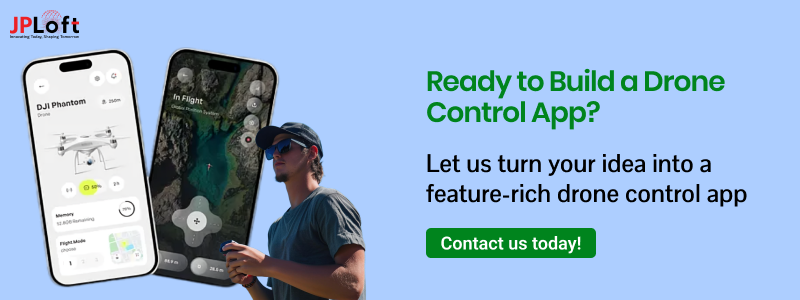
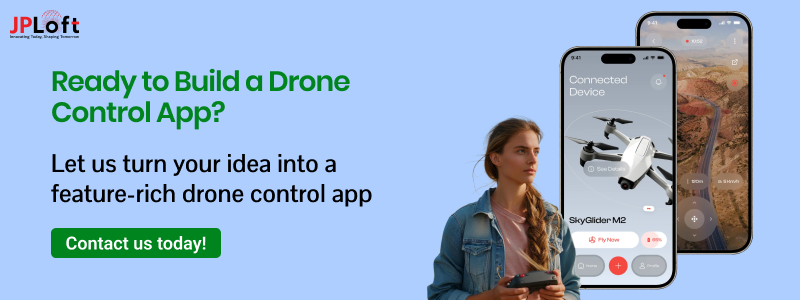

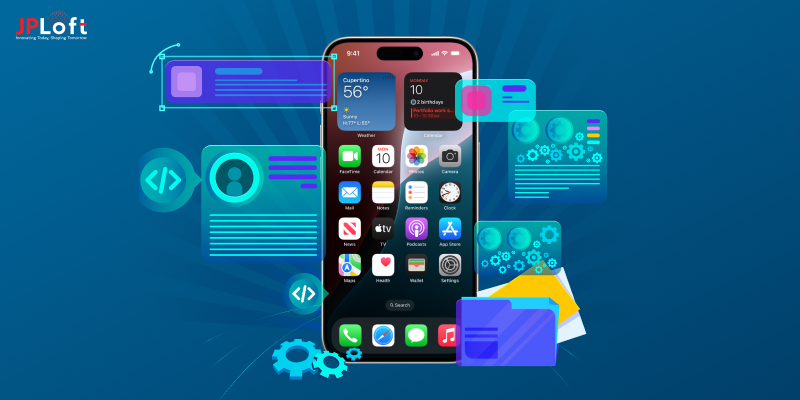
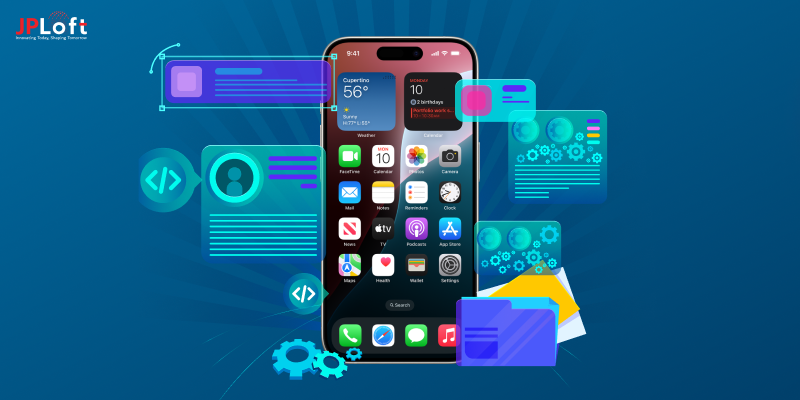
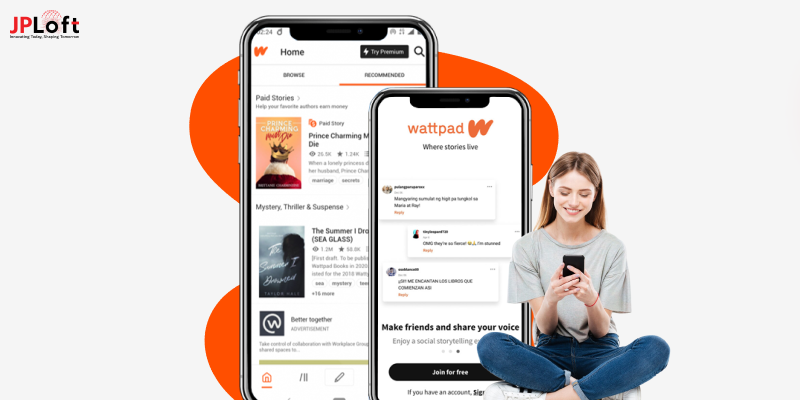



Share this blog